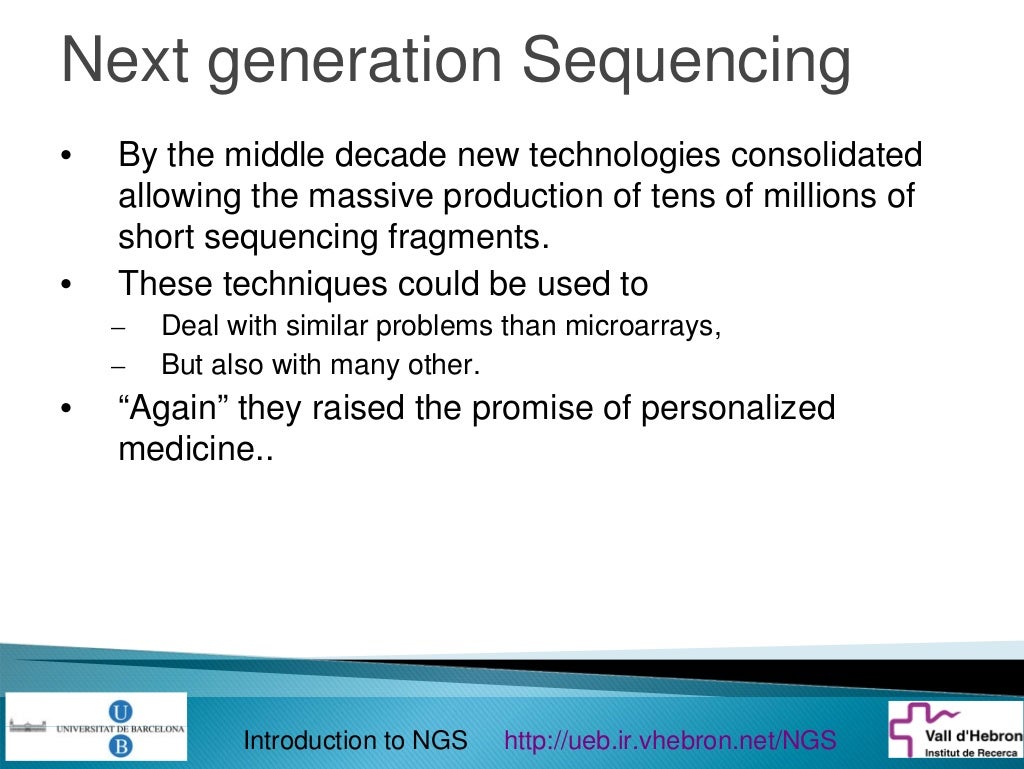

Coverage is variable within a sample and typical coverage ranges from 30 or less to >1000 for typical human genetic and cancer applications, respectively. The number of times each nucleotide is sequenced is referred to as coverage. One innovation to overcome the high error rate is to sequence each nucleotide (position) in the target DNA (genome, exome, etc.) multiple times. Many experimental and bioinformatics innovations are employed to address these challenges. compared to Sanger sequencing), (2) the most common NGS methods only produce short fragments, known as “reads”, ranging from ~100-300 nucleotides in length, and (3) datasets are very large, frequently >100 gigabytes. Today, however, it is possible to sequence entire genomes for a fraction of what it cost just 10 years ago.ĭespite the many benefits of NGS, these data are challenging to work with for several reasons, including: (1) NGS has a much higher error rate than other genotyping methods (e.g. For many years these types of projects were not possible because the data were difficult and expensive to obtain. NGS is being used to diagnose and determine the genetic cause of diseases, measure gene expression, refine phylogenetic trees, identify markers to differentiate between morphologically similar species, and de novo sequencing for non-model organisms. Next-generation sequencing (NGS) has accelerated research efforts in virtually every field in the life sciences. Our results suggest that PCR duplicate removal has minimal effect on the accuracy of subsequent variant calls. Genotype concordance between NGS and SNP chips was above 99 % for all genotype groups (e.g., homozygous reference). Results were similar for variants in the American College of Medical Genetics genes. There were no significant differences between the unique variant sets when comparing the transition/transversion ratios ( p = 1.0), percentage of novel variants ( p = 0.99), average population frequencies ( p = 0.99), and the percentage of protein-changing variants ( p = 1.0). ResultsĪpproximately 92 % of the 17+ million variants called were called whether we removed duplicates with Picard or SAMTools, or left the PCR duplicates in the dataset. Picard (MarkDuplicates) and SAMTools (rmdup) are the two main softwares used for PCR duplicate removal. These are often removed because there is concern they can lead to false positive variant calls.

One step in many pipelines is PCR duplicate removal, where PCR duplicates arise from multiple PCR products from the same template molecule binding on the flowcell. If one or more of these steps is unnecessary, it would significantly decrease compute time and data manipulation to remove the step. Typical analysis pipelines require multiple steps. These algorithms aim to find an appropriate balance between data loss, errors, analysis time, and memory footprint. Given these challenges, numerous bioinformatic algorithms have been developed to analyze these data.

Analyzing next-generation sequencing data is difficult because datasets are large, second generation sequencing platforms have high error rates, and because each position in the target genome (exome, transcriptome, etc.) is sequenced multiple times.


 0 kommentar(er)
0 kommentar(er)
